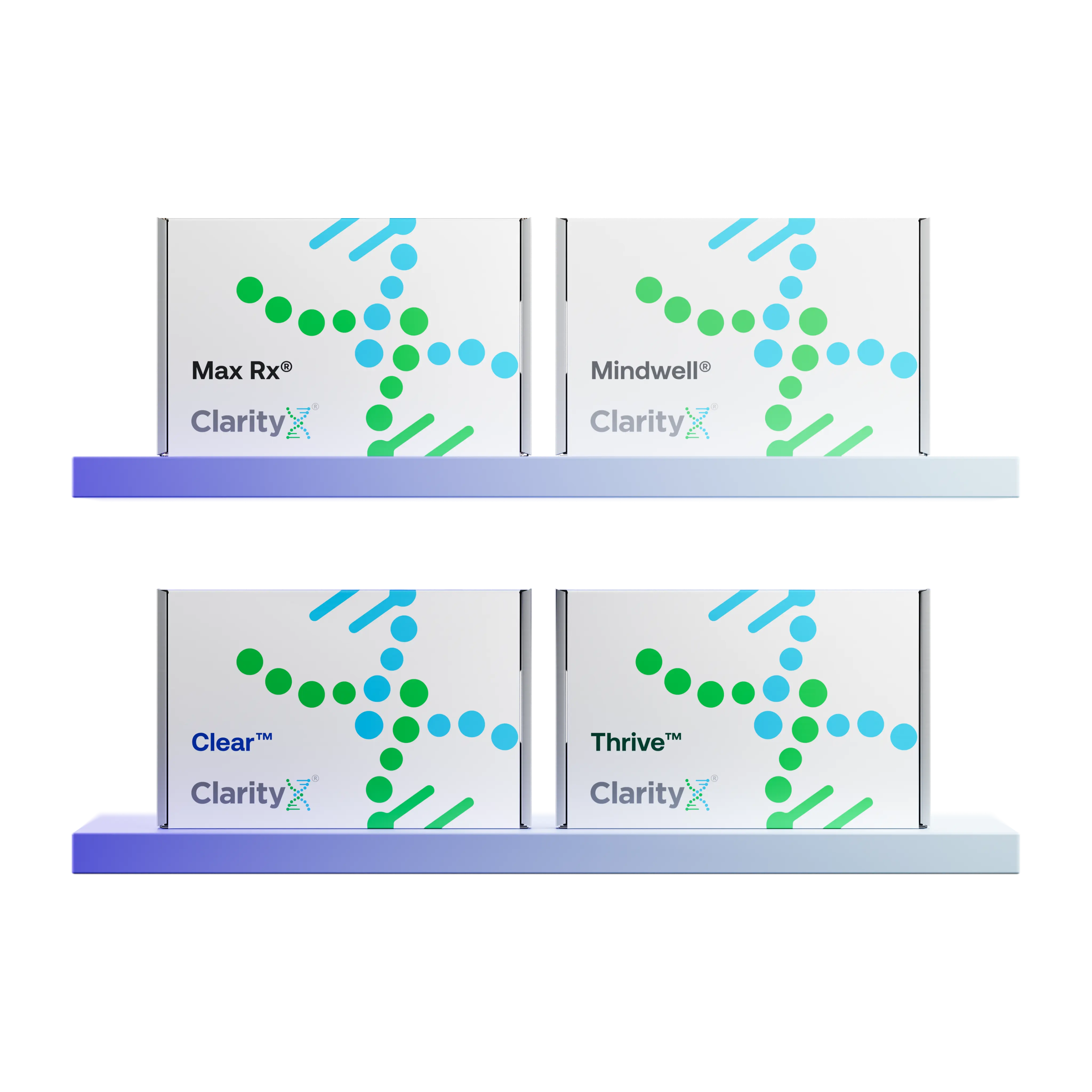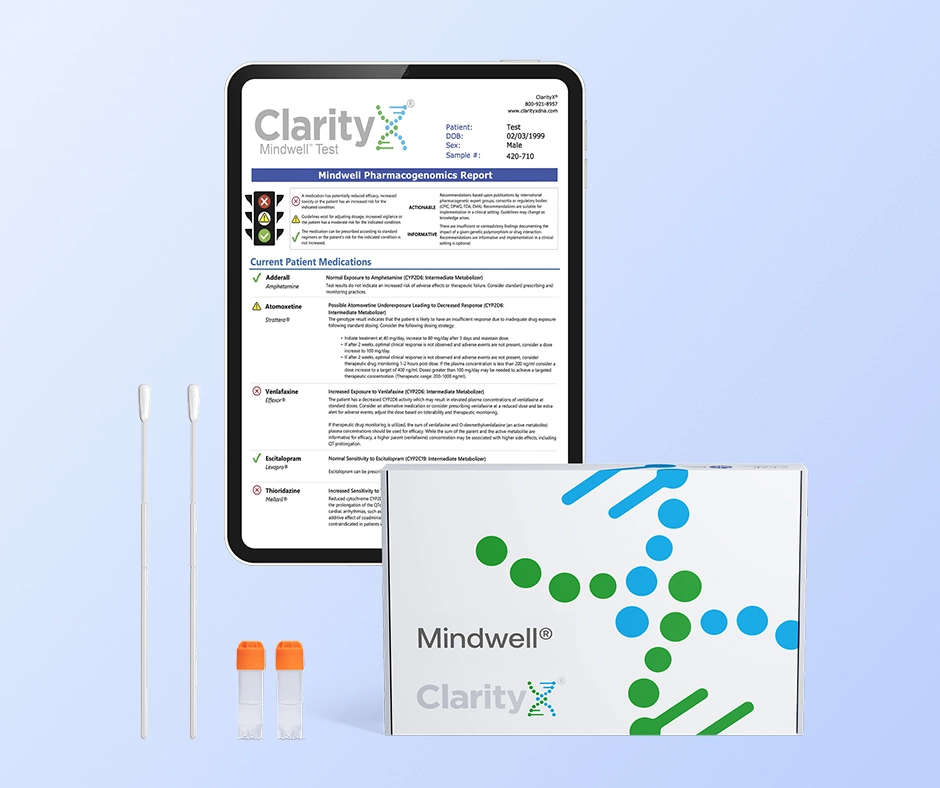For decades, the standard of care for prescribing new medication, especially in mental health, has been "start low, go slow." A patient presents with anxiety, and the provider prescribes a first-line SSRI. Then comes the waiting game of four to six weeks of hoping for relief, all while navigating a potential minefield of side effects. If that drug fails, the process repeats.
This "trial-and-error" model is not a failure of medicine; it's a failure of data. It's based on an "average" patient that rarely exists.
We all know patients who are incredibly sensitive to medications, reporting side effects from the smallest dose. We also know patients who seem "treatment-resistant," finding no relief from multiple drugs. The reason for this variability isn't a mystery, it's written in their DNA. Understanding a patient's full metabolic capacity is the key to moving from a reactive framework to proactive, precision medicine.
The Hidden Variable: The CYP450 Metabolic Engine
When a patient takes a medication, their body's "metabolic engine" gets to work processing it, primarily through the Cytochrome P450 (CYP450) enzyme system in the liver. The genetic instructions for building these enzymes dictate a patient's individual metabolic capacity, which is why a "standard dose" is a gamble.
Based on their genetics, every patient falls into one of several categories:
- Poor Metabolizers: Their enzymes work very slowly or not at all. A standard dose isn't cleared properly and can build up to toxic levels, causing severe side effects.
- Intermediate Metabolizers: Their enzyme function is reduced. They may be able to handle a standard dose, but are at a higher risk for side effects.
- Normal Metabolizers: This is the "average" patient that standard dosing is designed for.
- Ultra-Rapid Metabolizers: Their enzymes are overactive. They clear the medication so quickly that it never reaches a therapeutic level, resulting in treatment failure.
Consider a common SSRI like paroxetine, which is processed by the CYP2D6 enzyme. For a Poor Metabolizer, a standard dose can feel like an overdose. For an Ultra-Rapid Metabolizer, that same dose is like taking nothing at all. Without knowing this, the patient is left to suffer through weeks of side effects or no relief.
The Solution: Pharmacogenetics (PGx) Testing
Pharmacogenetics (PGx) is the science of analyzing a patient's DNA (through a simple, non-invasive cheek swab) to determine their unique metabolic capacity before a prescription is ever written.
This is the power of the ClarityX MaxRx® test. Our reports translate this complex genetic data into a clear, actionable guide for clinicians.
Clinical Scenario: A patient's ClarityX report identifies them as a CYP2C19 Ultra-Rapid Metabolizer. You immediately know that common SSRIs like sertraline (Zoloft) and citalopram (Celexa) are likely to be ineffective at standard doses. Instead of starting a "trial-and-error" process, you can immediately select a medication that uses a different metabolic pathway (like fluoxetine or an SNRI), saving the patient months of frustration and accelerating their path to wellness.
Going "Beyond Metabolism" for a Truly Holistic View
But knowing how a drug is processed (pharmacokinetics) is only half the story. A patient's "metabolic capacity" is about more than just their CYP450 enzymes. To get a truly holistic view, you must also understand Pharmacodynamics (PD)—what the drug does to the body. This includes the drug's targets and the environment it works in.
This is where ClarityX provides superior value. Because our panels are not restricted by insurance reimbursement guidelines, we can go "beyond metabolism" and include other critical genes that are scientifically relevant but often omitted from legacy tests.
- The Drug's Target (e.g., OPRM1): The OPRM1 gene builds the mu-opioid receptor, the "docking station" for opioids like morphine and oxycodone. A variation here can mean a patient is less sensitive to opioids and may require a different dosing strategy to achieve pain relief. This has nothing to do with metabolism—it's about the drug's target.
- The Drug's Environment (e.g., COMT): The COMT gene provides instructions for the "cleanup crew" that removes dopamine from the brain. A patient with "slow" COMT activity (a "Worrier") who takes a stimulant for ADHD may become anxious and overstimulated. A patient with "fast" COMT (a "Warrior") may respond perfectly. This gene defines the baseline environment the drug is entering.
- The Building Blocks (e.g., MTHFR): The MTHFR gene is essential for creating active folate, a key building block for the very neurotransmitters (serotonin, dopamine) that antidepressants target. A patient with an MTHFR variant may not be producing enough "raw material" for their SSRI to work. Augmenting their treatment with L-methylfolate could be the key to unlocking a response.
A patient's true "capacity" for a medication is a combination of all these factors. ClarityX is the only platform that provides this complete, 360-degree view, empowering you to make the most informed decision possible.






